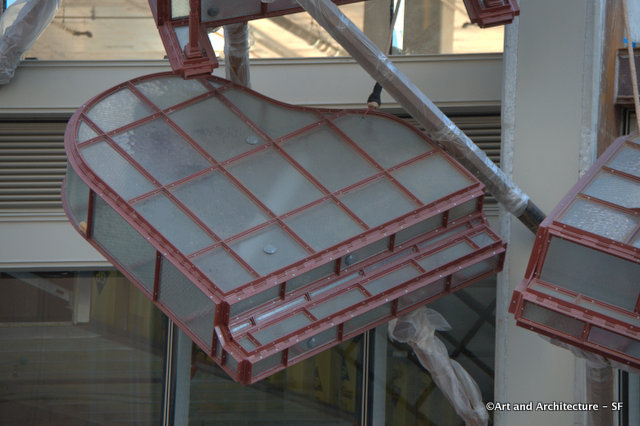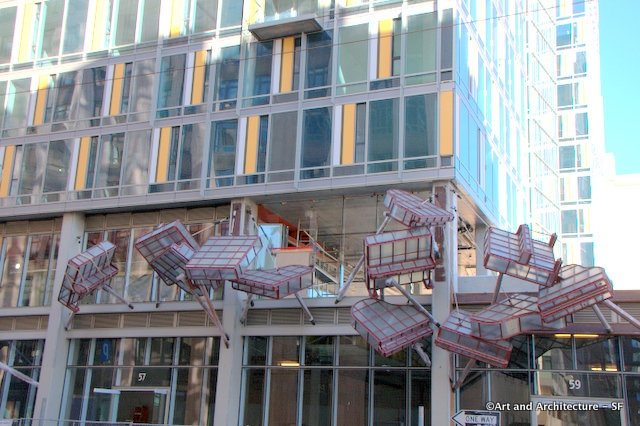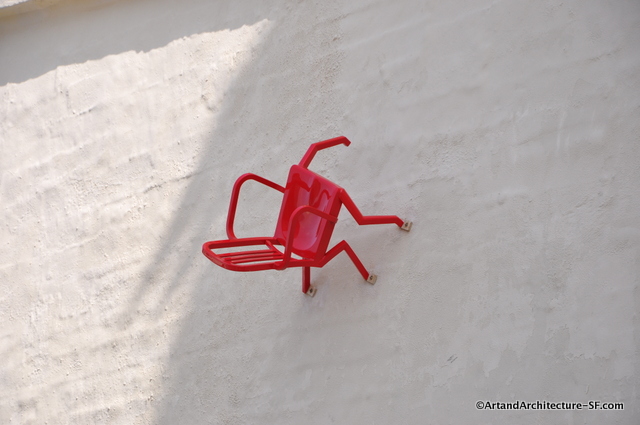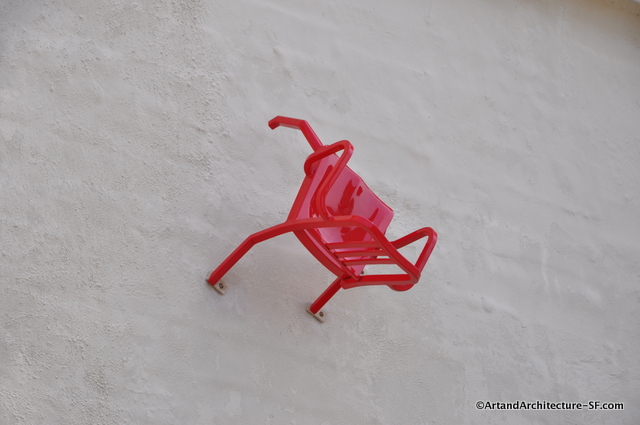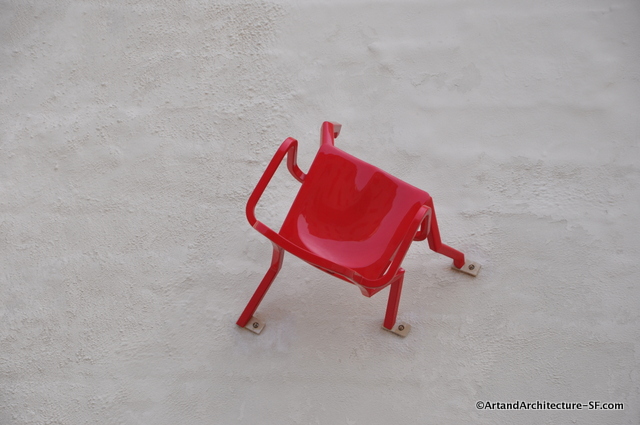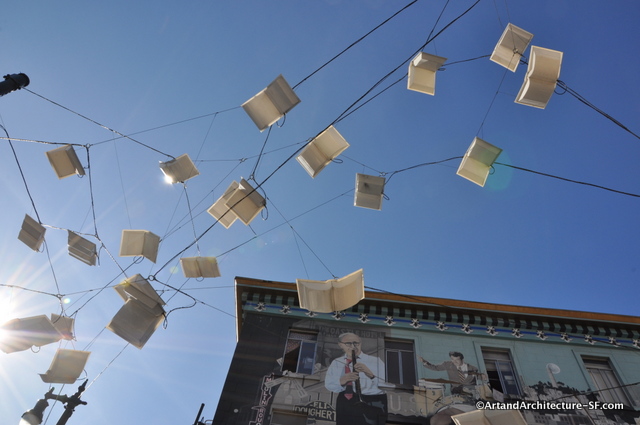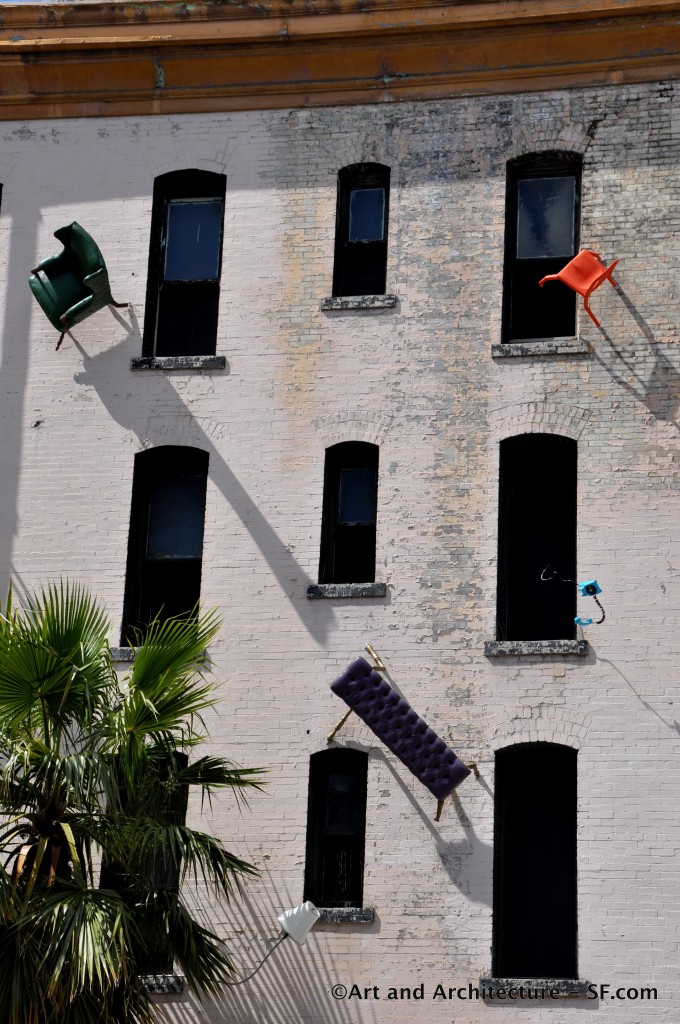55 Ninth Street
Mid Market/SOMA
I spoke with Brian Goggin about his installation of Caruso’s Dream well over a year ago. While it is taking a long time to get installed, and is was not quite finished when I wrote this post, I thought I would bring it to you anyway.
Brian has been in this site many times, you can read all about him here.
This is a public site-specific artwork commissioned by the developers of AVA 55 Ninth, a 17-story apartment complex on Ninth Street, sitting between Market and Mission.
After singing Carmen in San Francisco, the famous tenor Enrico Caruso woke the next morning in his room at the Palace Hotel to the shaking of the 1906 Earthquake. “But what an awakening!” he was quoted in the newspaper, “…feeling my bed rocking as though I am on a ship in the ocean, and for a moment I think I am dreaming.” This artwork, inspired by that quote, imagines Caruso’s dream on that fateful night.
Goggin, studying SOMA history, found that several piano companies were founded in San Francisco, most notably Sherman Clay. Sherman Clay is built on the spot where a piano was buried to fill a large pot hole thus inspiring Goggin and Caruso’s Dream. “Potentially that piano is still under Mission Street today,” says Goggin.
This installation is a joint project with Goggin and Dorka Keehn. They brought San Francisco the “Language of the Birds” that you can read all about here.
To build the 13 pianos, Goggin and Keehn collected 900 pieces of chicken-wire glass of different textures and colors.
The wooden struts that support the pianos were salvaged from pilings in the old Transbay Terminal. The ropes used to lash the piece are modeled after nautical hemp, tied in knots used by longshoremen.
The project was done at a cost of $750,000. This was part of the 1% for the arts program.
For those not familiar with the story:
The evening prior to the Great 1906 Earthquake and fire had been the opening night of the New York Metropolitan Opera Company’s San Francisco engagement. Caruso—already a worldwide sensation—had sung the part of Don José in Bizet’s Carmen at the Grand Opera House on Mission Street. “But what an awakening!” he wrote in the account published later that spring in London’s The Sketch. “I wake up about 5 o’clock, feeling my bed rocking as though I am in a ship on the ocean….I get up and go to the window, raise the shade and look out. And what I see makes me tremble with fear. I see the buildings toppling over, big pieces of masonry falling, and from the street below I hear the cries and screams of men and women and children.”
The Palace Hotel, where Caruso and many others in the company were staying, collapsed later that day, and sadly, not all would make it out alive. Caruso, however, made it out safely, his obviously very devoted valet even managed to remove the bulk of his luggage, which included 54 steamer trunks containing, among other things, some 50 self-portraits. “My valet, brave fellow that he is, goes back and bundles all my things into trunks and drags them down six flights of stairs and out into the open one by one.” That same valet would eventually find a horse and cart to carry the great Caruso and his many belongings to the waterfront Ferry Building—no mean accomplishment on a day when tens of thousands were attempting to escape the fires ravaging the city.
“We pass terrible scenes on the way: buildings in ruins, and everywhere there seems to be smoke and dust. The driver seems in no hurry, which makes me impatient at times, for I am longing to return to New York, where I know I shall find a ship to take me to my beautiful Italy and my wife and my little boys.” By nightfall, Caruso was across the bay in Oakland and boarding a train back to the East Coast.
After this experience Caruso vowed never to return to San Francisco, and he kept his word. Unlike Caruso, I promise to return to the site and bring you photos of the finished project soon.

